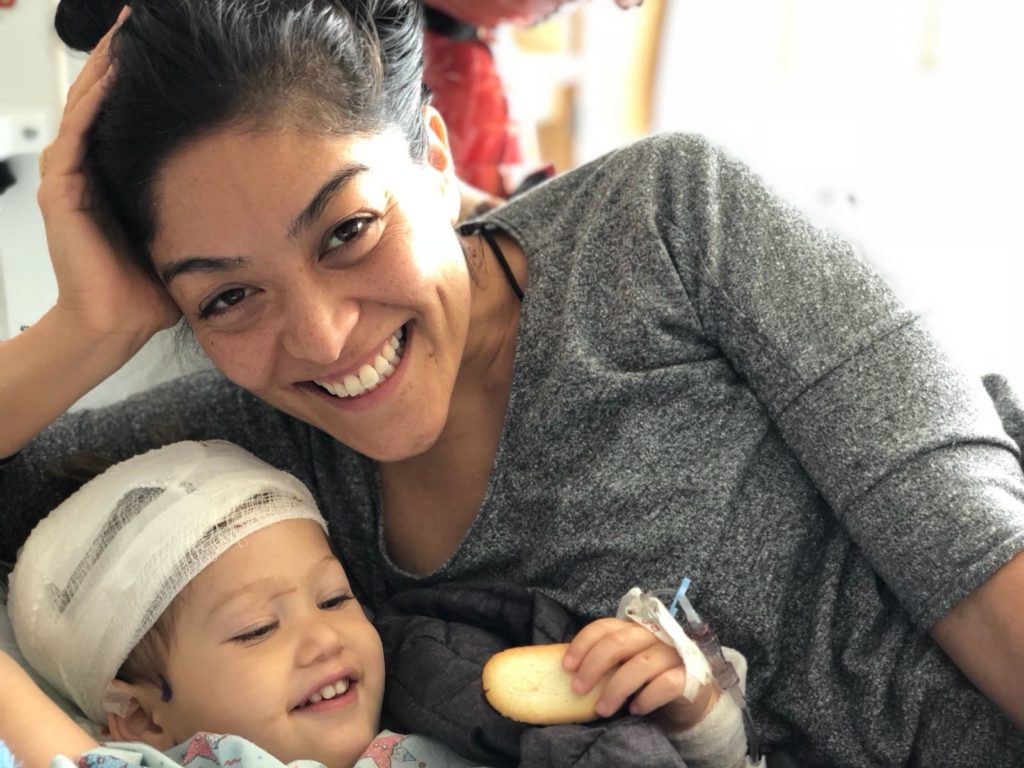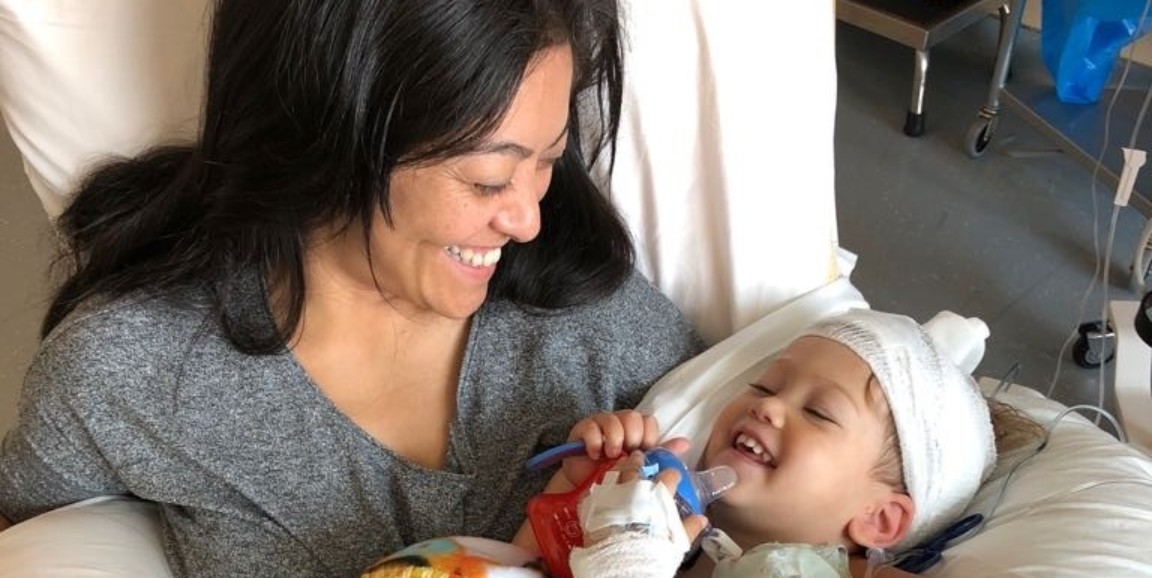Recently, a team of surgeons at Lucile Packard Children's Hospital Stanford made history when they removed a two-year-old's deep-buried brain tumor from the root, making their patient the youngest ever to receive such a surgery.
After planning the delicate surgery with virtual reality programs and hours of practice, the team, led by pediatric neurosurgeon Gerald Grant, MD, used endoscopic tools to take the tumor out through the patient's nose. The surgery spared Ari Ellman from serious side effects associated with other treatments.
In August 2018, after experiencing uncontrolled vomiting and a seizure, Ari was diagnosed with a craniopharyngioma near the base of his brain. The tumor was not cancerous, meaning it could not spread to other locations. But it was growing quickly and endangering several key brain structures, including Ari's hypothalamus, pituitary stalk, visual pathways and important blood vessels.
The standard options for treating these tumors -- brain radiation and open surgery from the top of the brain -- could have severe side effects. But an endonasal removal had never been tried in a child younger than 5.
A story on the Stanford Children's website explains how the team planned the unusual surgery:
Preparations for Ari began long before the surgery. An MRI-and-CT-scan-derived image of Ari's brain was loaded into a new 3-D virtual reality tool called Surgical Theater, allowing the team to map, rehearse, and perfect an approach that would maximize the amount of tumor removed while protecting critical structures... A resin model of Ari's skull base was also 3-D printed, on which realistic approaches could be tested and further rehearsed.
'A 2-year-old's sinuses are only 15 to 20 mm wide, or narrower. And you're removing a tumor that may be wider than the nasal passage,' says Peter Hwang, MD, the ENT surgeon on the team and an expert in endoscopy. 'It's like getting a ship out of a bottle; you have to figure out how to take it apart and bring it out through this very narrow corridor. That's why these additional technologies can play such an important role in pediatric skull base surgery in particular.'

Fortunately, the plan devised by Grant, Hwang and skull-base surgeon Juan Carlos Fernandez-Miranda, MD, worked perfectly. On the evening of February 8, after 16 hours of surgery, Ari's tumor had been completely removed, and all of his important brain structures were undamaged.
That has allowed Ari, now 3, to return to life as a happy, playful preschooler.
Photo of Ari and his mother, Na'ama, courtesy of the Ellman family




